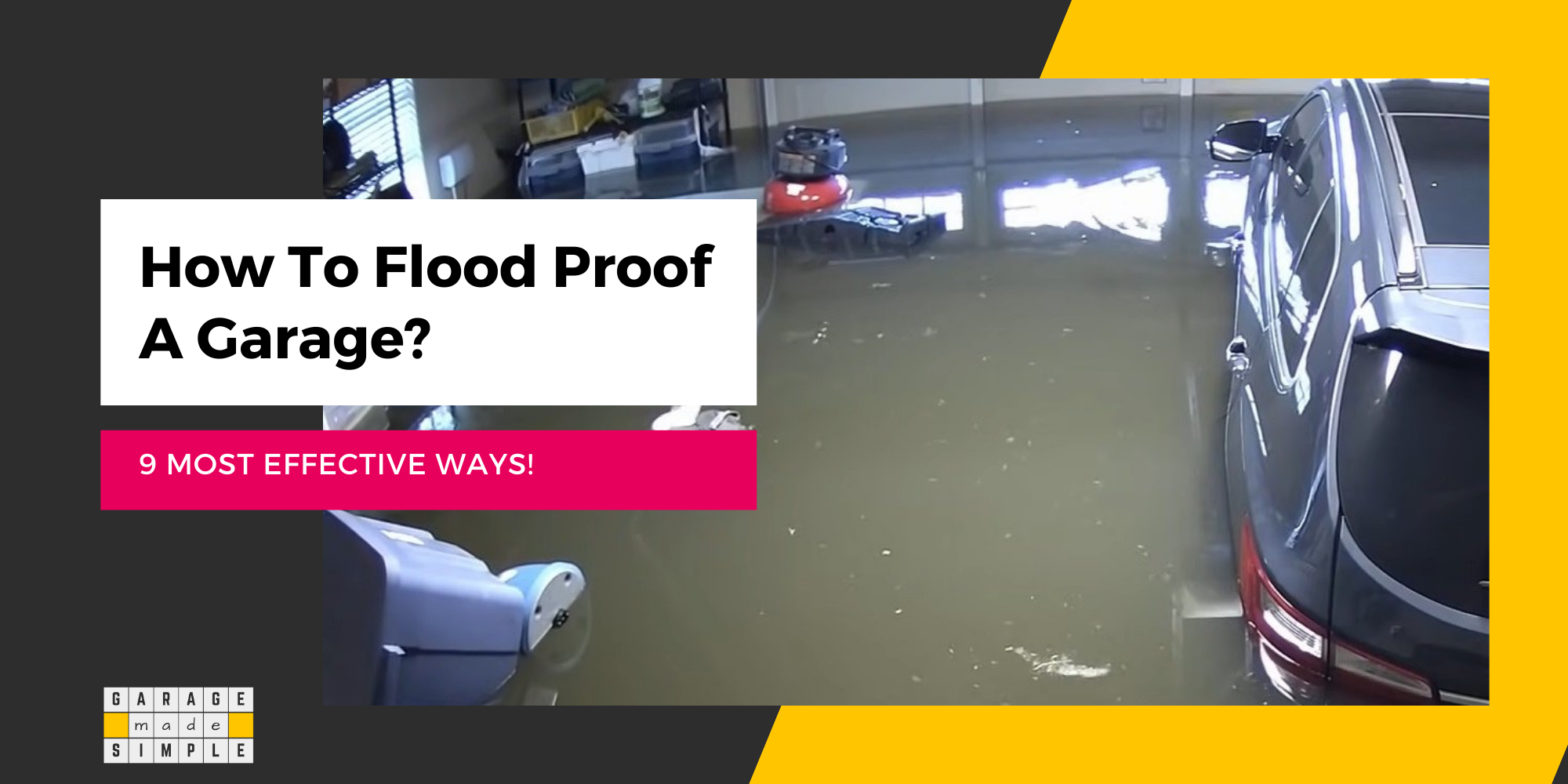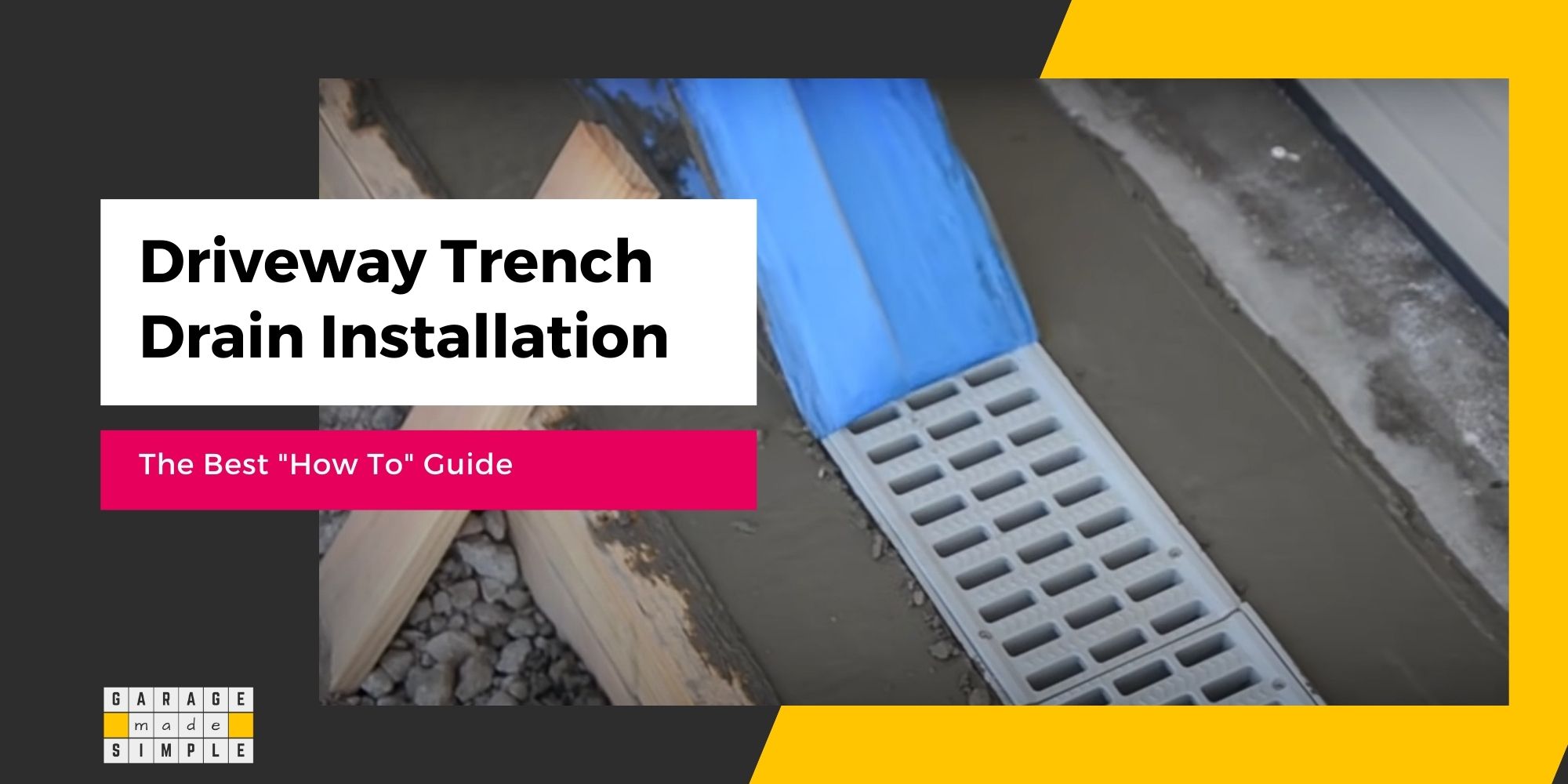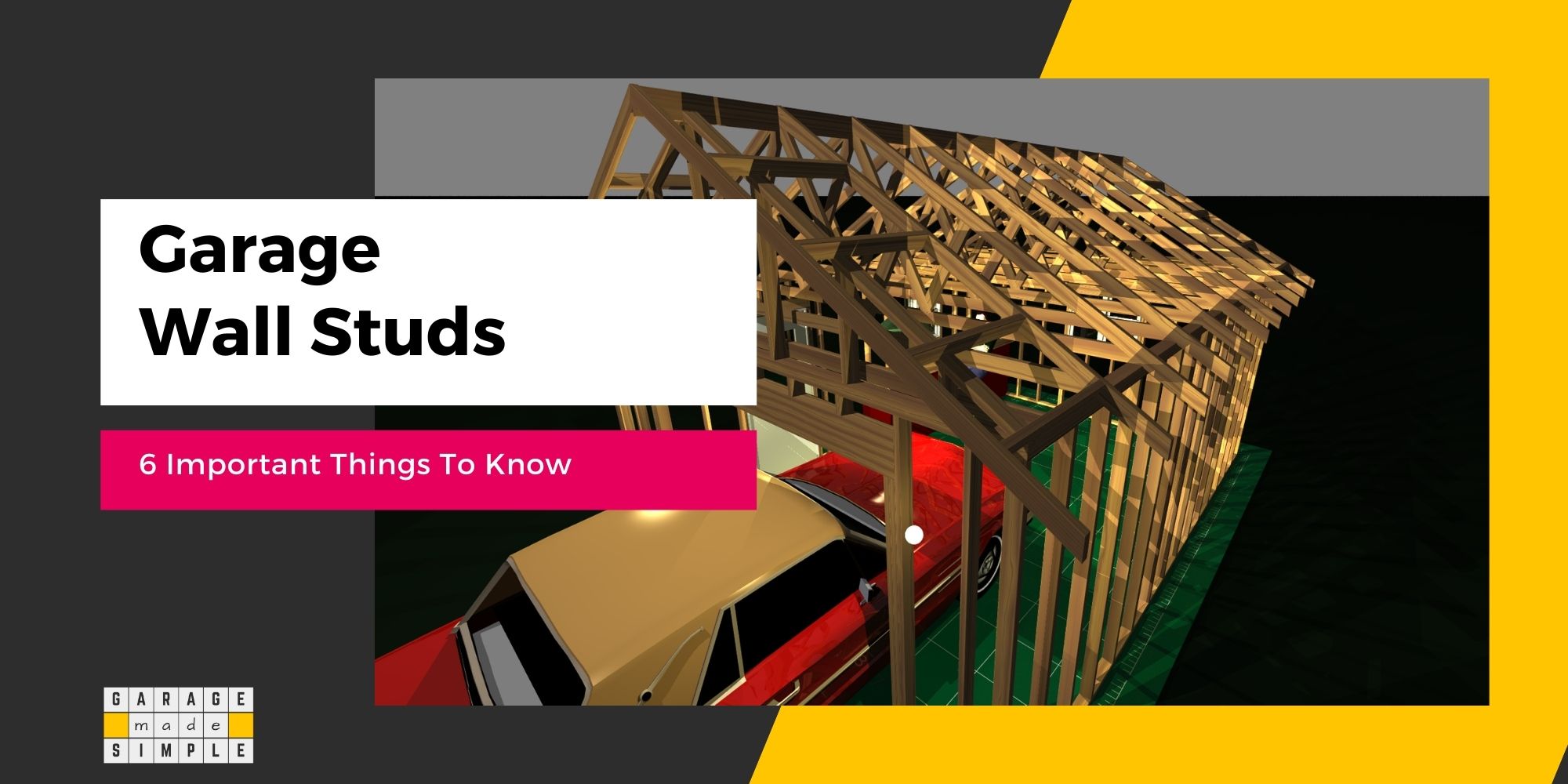Garage Floor Drain To Daylight: Comprehensive Guide
As an Amazon Associate, I earn from qualifying purchases.
Where Does a Garage Floor Drain Go?
The floor is all wet after you finish washing the car in the garage. So you pick up the squeegee and push all the water towards the garage floor drain. The water gurgles away. But do you know where the garage floor drain water goes? Does it go to the sanitary sewer drain system or the storm water drain system? Or is it a garage floor drain to daylight?
Actually Garage Floor Drains can discharge only to the sanitary sewer drain system. Alternatively, you can have a Garage Floor Drain to Daylight. Discharge to the Storm Water Drain System is almost never permitted.
Knowing where the garage floor drain goes is important because garage floor drains are regulated by the local building code.
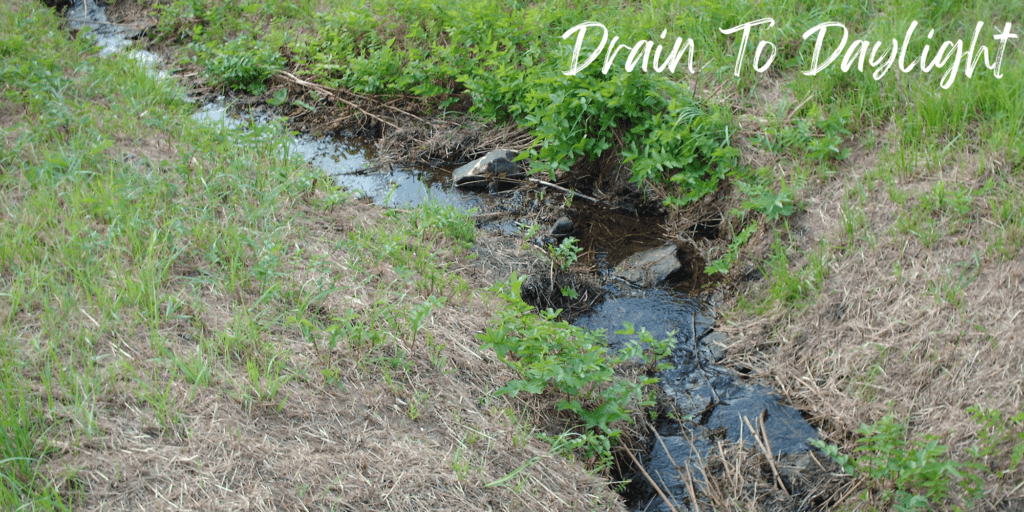
In this post I am going to tell you about the most commonly accepted building codes for garage floor drains, including that for garage floor drain to daylight.
What Does It Mean to Drain to Daylight?
Unlike a traditional drainage system, a drain to daylight system directs water from the source, such as the garage floor or driveway, directly to the outdoors.
By utilizing gravity and smart construction, the drain to daylight system ensures that excess water is channeled away, preventing flooding without the necessity of using the municipal drainage system.
The simplicity of a drain to daylight system lies in its straightforward design. The discharged water in a drain to daylight system is released into the natural environment, such as a ditch, stream, or creek. The discharged water gets partially
- absorbed by the soil
- run off to a natural water body such as a river or lake
- evaporated into the atmosphere
NOTE: Drain to daylight systems can only be used if the discharged water is clean and free of pollutants so as not to contaminate the natural environment and harm aquatic life.
A drain to daylight drainage system is often used in areas where there is no municipal storm drain system or where the storm drain system is not adequate to handle the volume of runoff.
Advantages of a Drain to Daylight System
Drain to daylight systems offer clear advantages for homeowners dealing with water management issues. These are:
- Flood Prevention: Swiftly diverts water away, preventing damage to garage floors, driveways, vehicles, and belongings.
- Easy Maintenance: Simplifies routine checks and blockage clearance due to the absence of intricate underground networks, leading to cost savings and hassle-free management.
- Environmentally Friendly: Channels water into the natural environment, reducing stress on municipal systems and promoting sustainable, eco-friendly practices for responsible homeowners.
What is a Garage Drain for?
A garage floor is an area which is prone to getting flooded with water from numerous sources.
Garage Door
The garage door, in most cases, takes up all of one of the walls. A standard one car garage door is 8 feet wide and 7 feet tall. A two car garage door will be twice as wide. That is a big hole you have in your garage.
The garage door also gets opened at least a couple of times in a day. Possibly more. If it is raining or snowing at that time and there is some wind as well, then water will get into the garage.
Water can even get in when the garage door is closed if the weather-stripping on the garage door has degraded and you have not replaced it.
Cars
When you drive in and park your car in the garage when it has been raining or snowing, the car is wet or covered in snow.
Overnight the rainwater drips and the snow melts, leaving a pool of water on the garage floor in the morning.
And of course you may want to wash the car in the garage. A Retractable Garage Divider will help contain the water spray but the garage floor will still get wet.
Clean Up
It is natural for a garage floor to get dirty. If it was just dust, you could use the vacuum to clean up. But because of the cars you are bound to have oil spills. Add to that the mess you may create while doing your pet projects; saw dust, paint drips etc.
A modern garage gets used for a variety of other purposes too. Garage Gym, Man Cave, Kids Playzone, Gardening Equipment Storage, just to name a few.
If you want your garage looking clean and smelling fresh, you will need to wash the garage floor once a week.
Is there a Building Code for Garage Floor Drains?
Local Authorities having the jurisdiction in your area may be counties, boroughs, townships, towns, municipalities or cities. Whatever the name, they have jurisdiction over your area and are also responsible for providing basic public infrastructural facilities.
Local Authorities are very much concerned about what will go in your garage drain and where the drain will lead to.
Local Authorities have two sewer systems, by which they collect liquid waste from homes and move them to the disposal point. They are the “sanitary sewer” system and the “storm sewer” system.
The first is to handle the biological waste from kitchens, bathrooms & toilets, the second is to handle the rain water from the roof, driveway etc.
The run-off from a garage is mostly water, but can have gasoline, oils, greases and other harmful & hazardous chemicals. This is why municipalities have to enforce strict regulations on the discharge from garage floor drains, including that from garage floor drain to daylight.
Types of Garage Floor Drain Discharge
Chances are your local authorities do not permit the garage floor drain to go into the storm water drain system.
Local building code will usually allow you to discharge the water from your garage floor into the sanitary sewer drain system, provided it meets effluent standards prescribed.
Some municipalities allow you to discharge the water from the garage to an area outside the garage, but within your property limits. This is known as the “garage floor drain to daylight”.
Garage floor drain to daylight will also have its own building code regulations, that you must comply with.
Garage Floor Pitching
The 2021 International Residential Code (IRC) Section 309.1 stipulates
Garage floor surfaces shall be of approved noncombustible material. The area of floor used for parking of automobiles or other vehicles shall be sloped to facilitate the movement of liquids to a drain or toward the main vehicle entry doorway.
In accordance with the code building contractors will pitch the garage floor towards the garage door. A pitch of 1/4 inch for every foot is a commonly accepted norm. It ensures smooth flow of water towards the garage door or the garage floor drain as the case may be.
Check with Local Authorities
You need to check with the local building code for garage floor drains with the local authorities or / and your HOA (Homeowners Association). The codes will be different for:
- garage floor drain to storm water drain system (highly unlikely this will be permitted)
- garage floor drain to sanitary sewer system (most likely this will be permitted, but you will need to meet effluent discharge norms)
- garage floor drain to daylight (usually permitted but conditions apply)
- no garage floor drain, instead the garage floor pitches to the garage door. The water just flows from the garage to the driveway and on to the storm water drains or the front yard (authorities may want you to ensure stuff like oil, grease and other hazardous chemicals are not being spilt on the garage floor). This could be tricky!
Does a Garage Floor Drain to Daylight Need a Trap?
As mentioned before, there is no uniform building code which is applicable across all of the USA. The local authorities often use IRC as a guideline, but do make their own amendments and modifications.
You may think that the water discharge from a Garage Floor Drain to Daylight is within your own property, so it should be only your concern. However, local authorities are not likely to accept that line of argument.
Water discharge from a garage is assumed to be contaminated with oil, grease, hazardous chemicals etc. Authorities do not want such water to reach public or natural water bodies as they can be harmful to marine, animal and human life.
In the case of a Garage Floor Drain to Daylight, local authorities are likely to insist on some or all of the following:
- Do not put other fluids like oil, solvents, paints or chemicals into a garage floor drain
- Install an oil-water separator (oil trap, if you will) before the water is discharged
- The water should be discharged above ground (not underground) so that it is visible
- Your home should not be close to and uphill of water bodies such as lakes, rivers, streams, even marshlands.
Oil-Water Separator
I know I am repeating myself, but you have to check and get the clearance from your AHJ (Authority Having Jurisdiction). That’s the way it works.
Local building code may require you to install an oil trap in your garage floor drain before the water is discharged into the sewer drain or in the yard.
The discharge from Garage Floor Drain to Daylight is likely being spread over your backyard. Using an oil-water separator, that is an oil trap, will ensure that the discharge from Garage Floor Drain to Daylight will be relatively clean and will not be harmful to the grass & other plants.
The oil-water separator, that is an oil trap, is a very simple device. It uses the fact that oil floats on water, to separate oil from water. You can buy one from Home Depot or Amazon.
Step-by-Step Installation Guide: Garage Drain to Daylight System
Consider using Vodaland – Stainless Steel Slot Drain System for your garage drain to daylight project.
Vodaland – Stainless Steel Slot Drain System
- Each channel is 3.3 feet in length
- Stainless steel slot drain grate is 4 inches in height
- Tongue and groove connection on both the channel to channel and gratings for a perfect straight line connection
- Installation is very simply with multiple outlet connections
To install a garage floor drain to daylight system you can use the following straightforward steps:
- Plan Your Drainage Route: Determine the optimal path for water flow from your garage to an outdoor location. Avoid areas prone to flooding or close to neighboring properties. Plan a slight slope to ensure water flows smoothly.
- Gather Essential Tools and Materials: Acquire the necessary tools and materials, including PVC pipes, connectors, a drain basin, gravel, concrete, a level, and a saw. Ensure you have all components before starting the installation process.
- Excavate the Trench: Dig a trench along the planned drainage route. The trench should be deep enough to accommodate the PVC pipes and slope downward consistently. Use a level to ensure the proper slope for effective drainage.
- Install the Drain Basin: Place the drain basin at the lowest point of the trench. Connect PVC pipes to the basin, extending the pipe length to reach the desired outdoor location. Use connectors to secure the pipes and create a continuous path for water flow.
- Backfill with Gravel: Fill the trench around the pipes with gravel, ensuring proper drainage and stability. Compact the gravel gently to prevent shifting over time.
- Pour Concrete Slab: Create a concrete slab over the drainage system, reinforcing stability and providing a secure surface. Level the concrete to prevent water pooling and allow easy access to the drain when needed.
- Test the System: Pour water into the drain to ensure proper flow and identify any potential issues. Address any problems immediately, making necessary adjustments to the pipe connections or slope.
How do you keep Garage Floor Drain to Daylight from Freezing?
If you live in one of the northern states that freeze during winter then you are sure to face the problem of the Garage Floor Drain to Daylight. Once it freezes your drain is pretty much useless.
Worse, before you know it, snowmelt from the car is forming water pools on the garage floor. This water then freezes overnight, making your garage very slippery and a real life safety hazard!
It helps if you keep the pitch of the drain high then the water will flow out more smoothly. So if there is no water in the drain then there will be no freezing. It also helps if you keep the outlet protected from wind by covering it with leaves or putting some kind of wind barrier.
So what can you do? Well there are a few solutions that may help.
Salt in a Sock
This is one of the cheapest hacks out there. Fill up an old sock, or two, with salt and hang it in the garage drain from the bottom of the drain grate. The salt will keep the drain water from freezing.
Check once in a while and replace the salt if it is depleted. This hack should work most of the time.
Hot Water with Salt
If the Garage Floor Drain to Daylight is already frozen then you could pour hot water mixed with salt down the drain. It will take some time but slowly the freeze will thaw and you will have a free flowing drain again.
Pipe Heating Cable
This is more than a hack as it will most certainly work. Snake this HEATIT HISD 18-feet Pipe Heating Cable with Built-in Thermostat in the Garage Floor Drain to Daylight. It is automatic because it has a built-in thermostat.
Why Choose U-DRAIN™?
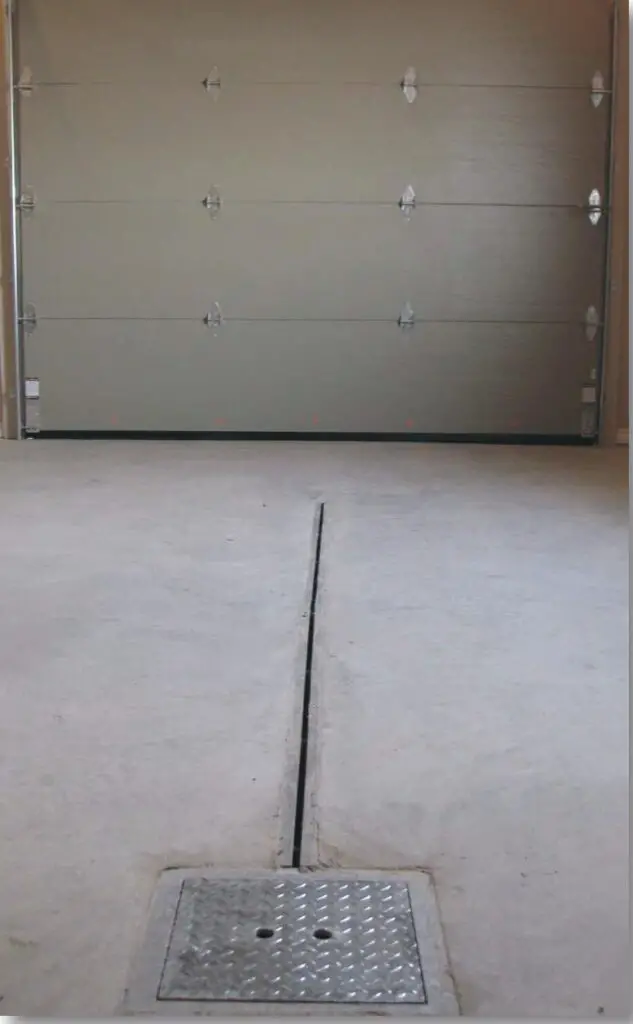
U-drain a company from Canada has a very sleek design. Their SINGLE SLOT INTAKE has revolutionized the trench drain industry. A sleek look and far easier to maintain. The benefits of U-drain are:
- Once your concrete has been poured, U-drain™ is fully encased, only the slot is visible. This provides a sleek finish.
- U-drain™ has no grates to get clogged and dirty looking, making it an excellent choice for garage floor drainage, poolside drainage, patio drainage and more.
- There are no grates in the floor drainage system to plug, remove and clean. The intake of the drain is its simple slot.
- If the floor drain could use a cleaning, simply insert the cleaning paddle and run it along the length of the drain to the sump pit.
- The U-drain™ features a sump pit that is designed to be plumbed out to either a weeping tile or some other form of drainage so that all drain water is disposed of efficiently.
- Residential U-drain™ has an ADA compliant 1/2″ slot opening.
- Residential U-drain™ sits flush with the floor surface and does not pose a tripping hazard for foot traffic.
Bottom Line
Garage Floor Drain to Daylight is one of the two ways you can discharge water from your garage. Discharging it in to the Sanitary Sewer Drain System is another.
You can not discharge the Garage Floor Drain into the Storm Water Drain System. You can, however, have a pitch in your garage floor such that the water on the garage floor naturally flows towards the garage door, over the driveway and ultimately into the storm water drain on the curbside.
Thank you very much for reading the post. I do hope you found it informative and useful.


